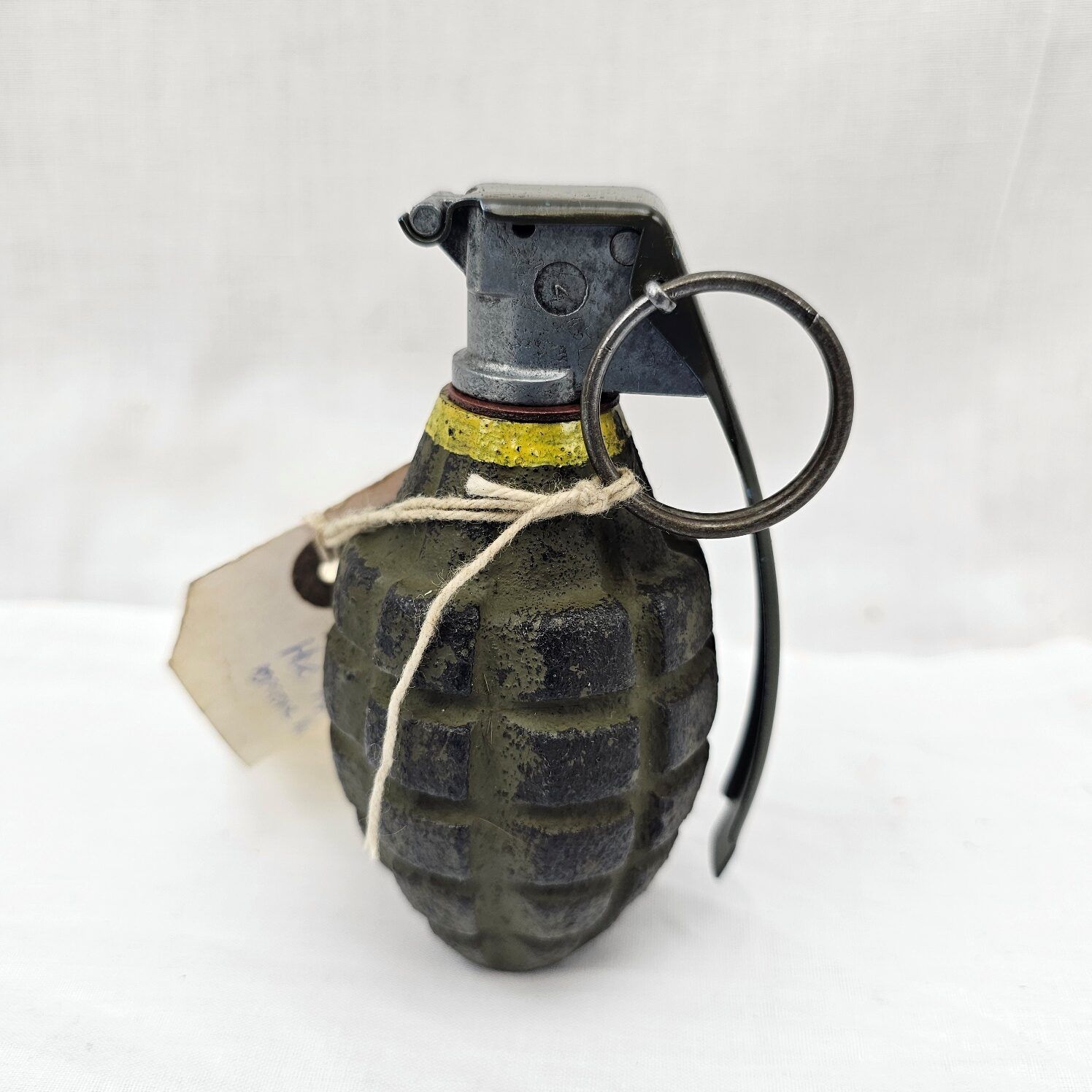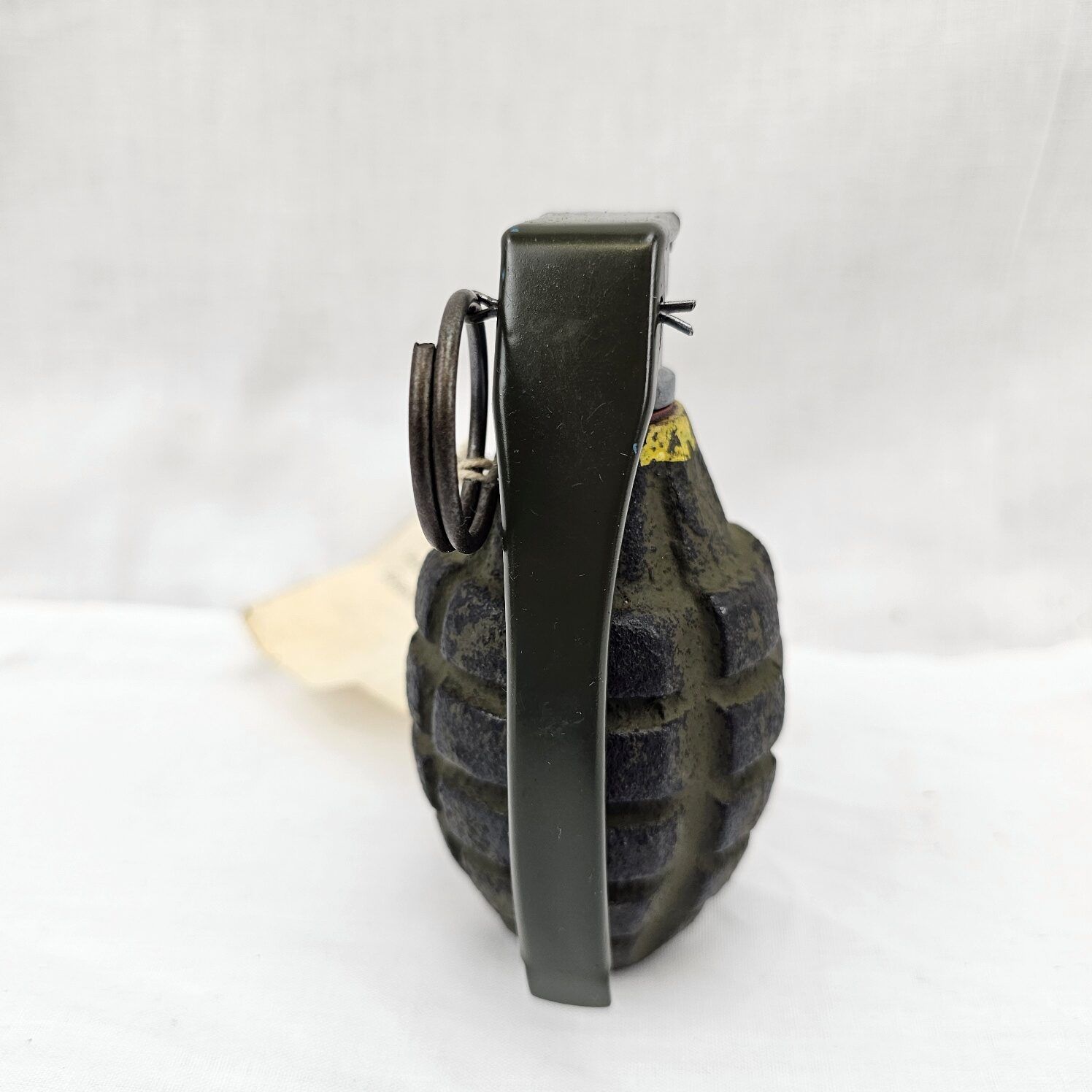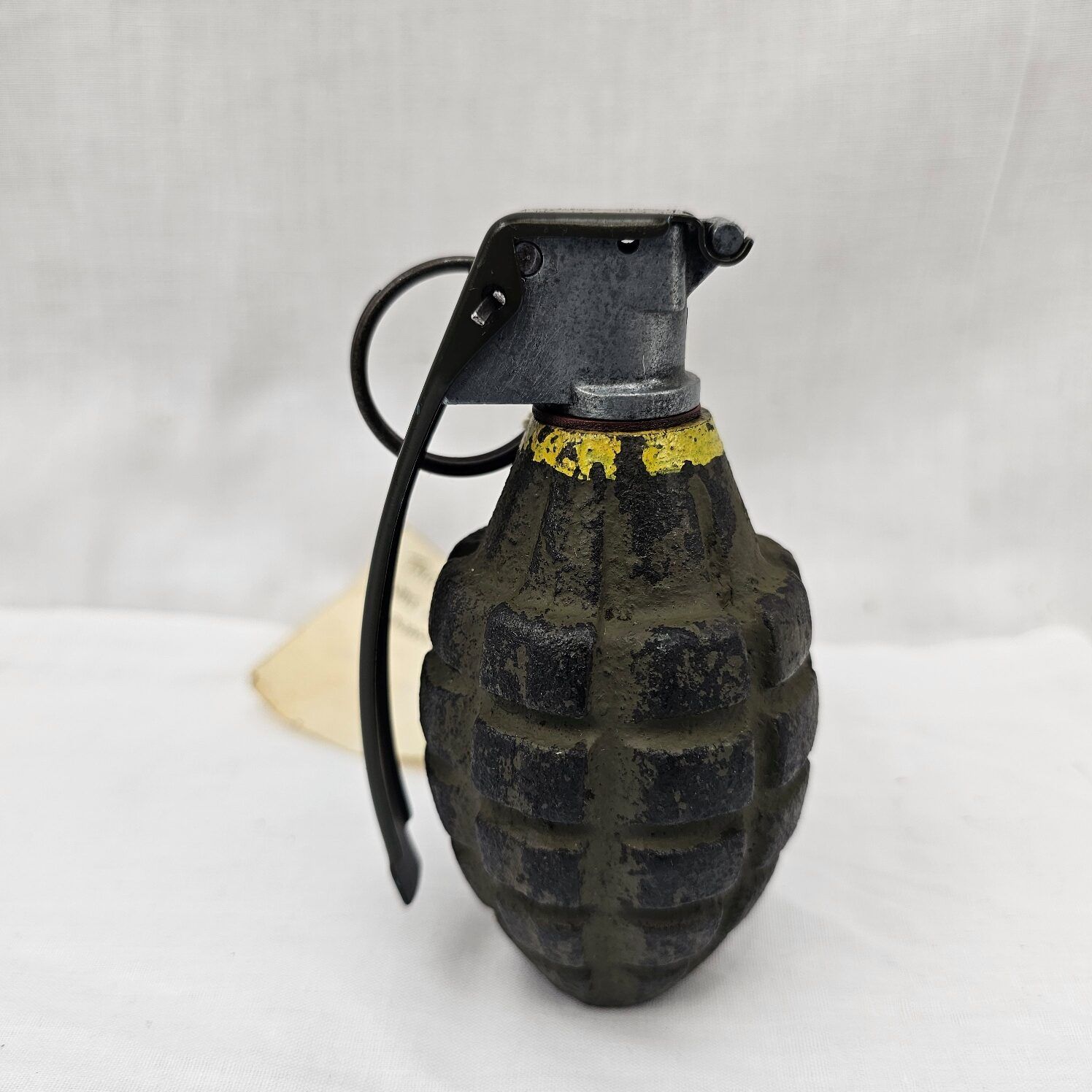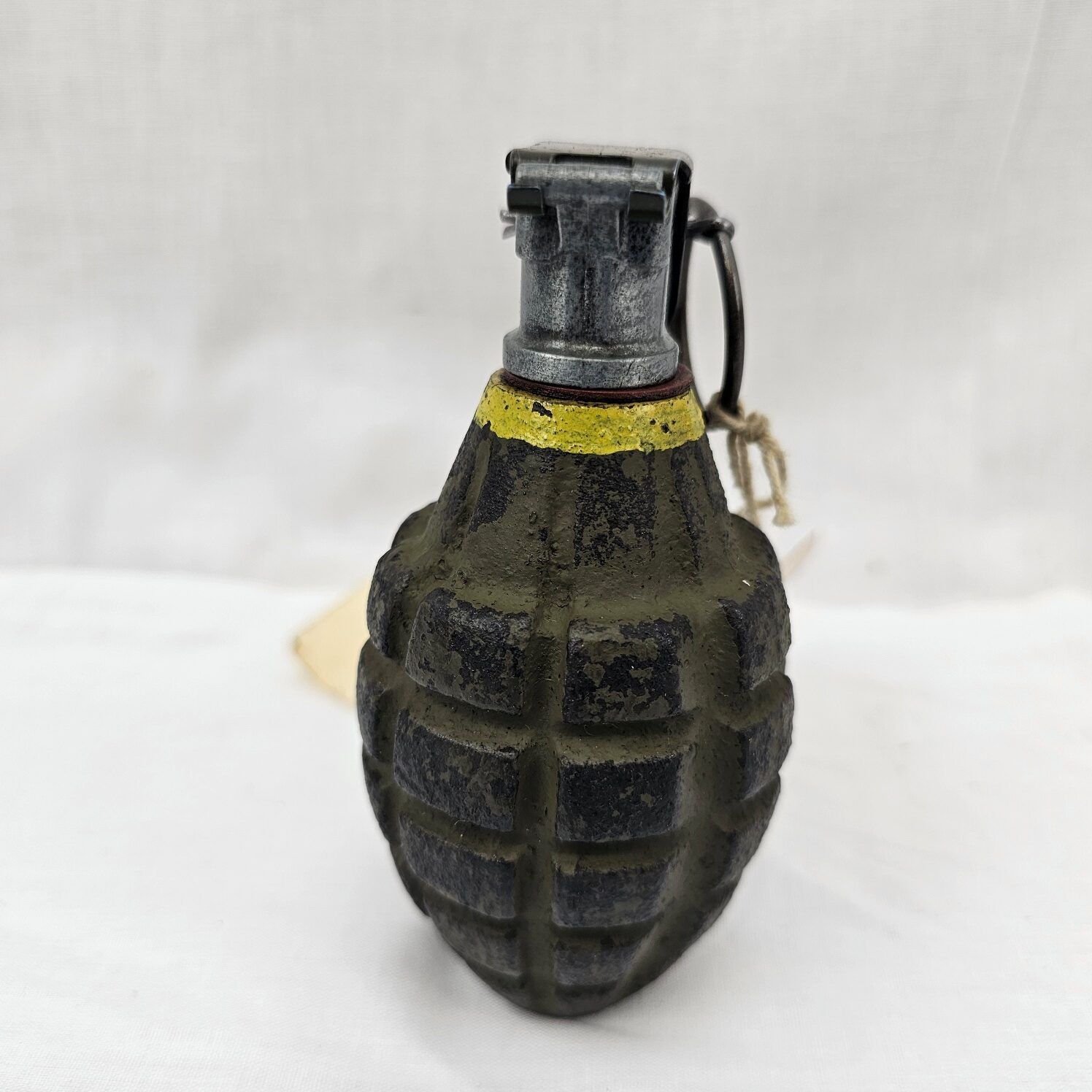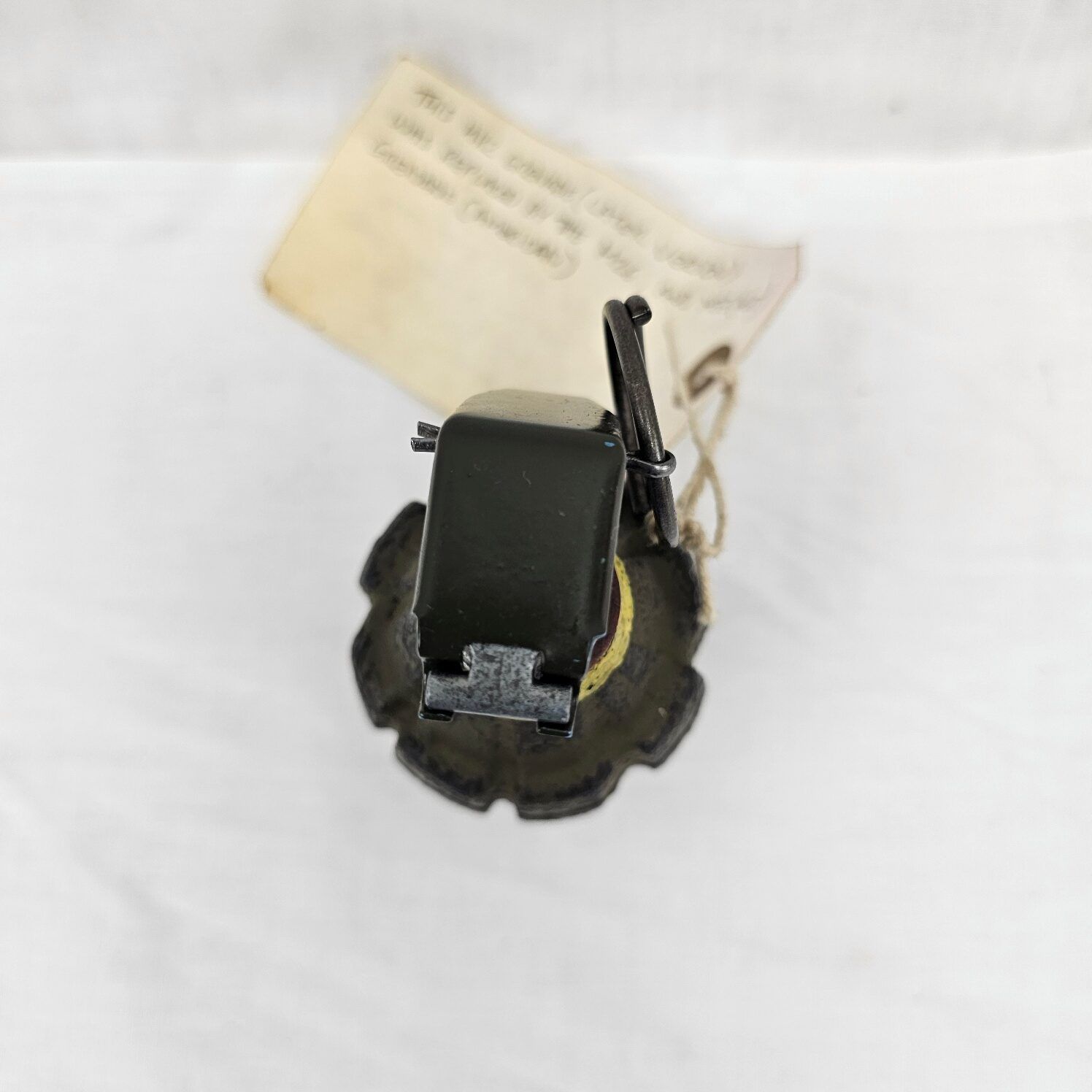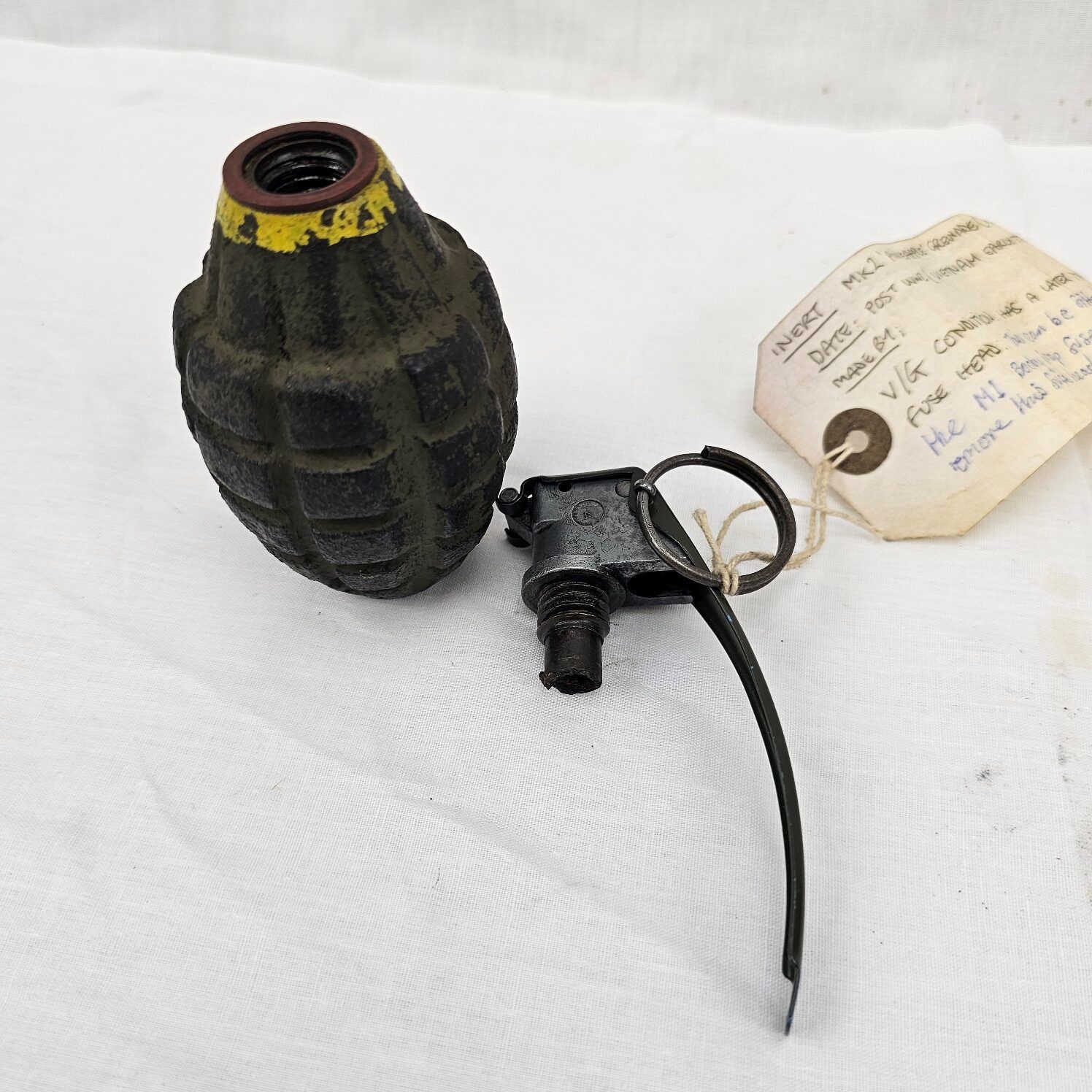~ Post WW2 Vietnam Era American MK 2 Pineapple Grenade – Inert ~
The Post-World War II Vietnam Era American MK 2 Pineapple Grenade is an iconic piece of military ordnance. Here’s an in-depth look at its design, history, and use during this period:
Overview of the MK 2 Pineapple Grenade
History and Development:
Introduction: The MK 2 grenade was originally introduced during World War II and continued to be used extensively through the Vietnam War.
Evolution: While the basic design remained the same, the MK 2 underwent several modifications post-World War II to improve its reliability and effectiveness.
Design and Features:
Shape and Structure: The MK 2 grenade is known for its distinctive pineapple-shaped body with segmented fragmentation grooves designed to disperse shrapnel upon detonation.
Material: It is made from cast iron, which was later replaced by other materials in subsequent designs to improve fragmentation.
Weight and Size: The grenade weighs approximately 14 ounces (400 grams) and measures about 2.5 inches in diameter and 5.75 inches in height including the fuze.
Mechanism:
Fuze System: The MK 2 utilizes a pyrotechnic delay fuze. Once the pin is pulled and the lever is released, the fuze ignites and burns for about 4 to 5 seconds before detonation.
Explosive Filling: The grenade is typically filled with TNT or Composition B, a mixture of RDX and TNT, which provides a powerful explosive charge.
Usage in Combat:
Vietnam War: The MK 2 was widely used by American forces during the Vietnam War for its effectiveness in jungle warfare. Its fragmentation capabilities made it ideal for clearing bunkers, trenches, and enemy personnel in dense foliage.
Versatility: It was primarily used as a hand grenade but could also be adapted for use as a booby trap or demolition charge.
Identification:
Markings: Post-World War II MK 2 grenades often feature distinct markings, including the manufacturer’s code and lot number. These markings are typically found on the body and the base plug.
Color: The grenades were commonly painted olive drab with a yellow band around the neck, indicating a high-explosive filling. Practice grenades were often painted blue.


